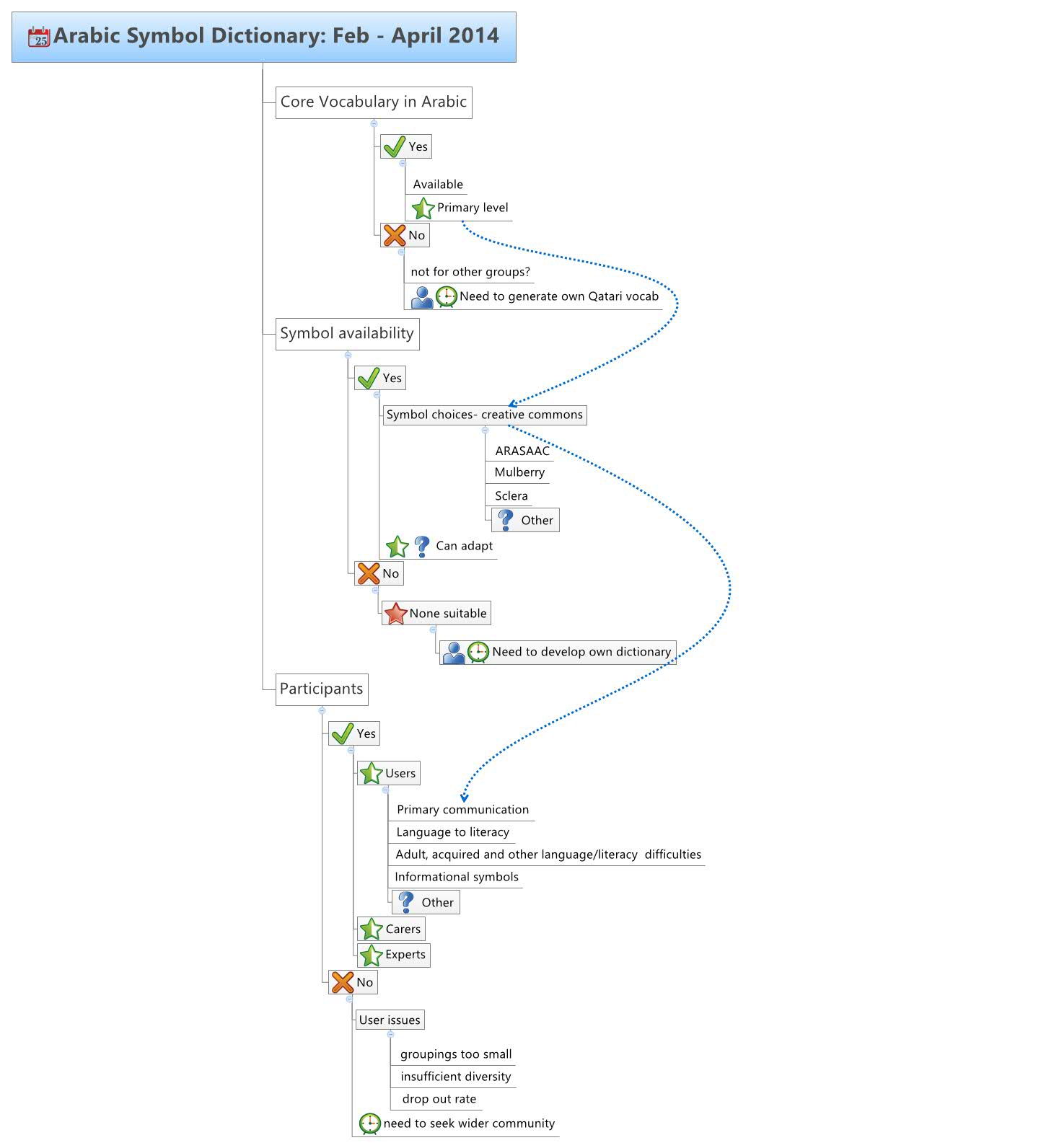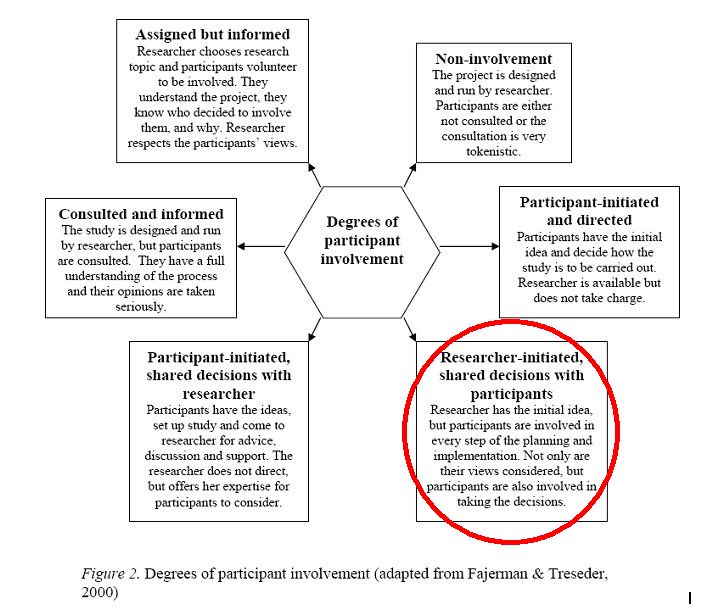During this last week we have been discussing the issues around the three main concerns arising – that of the core vocabulary, symbol sets already available and working with participants. The diagram below is available in text format – Arabic Symbol Dictionary plans Feb to April
Visits and telemeetings along with journal paper collections have started the process of making choices that will be further explored during three days of meetings between all the partners.
A few random questions have also arisen…
Does anyone have experience in evaluating the difference between the way text to speech works for users when presenting spoken words; which have to be listened to in the order they are said and may be colloquial (diglossic Arabic) and the written words and symbols which although they have an order on the page the reader has the flexibility to scan them in a any order?
Looking at a paper entitled “How do members of different language communities compose sentences with a picture based communication? Nakamura et al (1998) . Would this be one way to start exploring the differences we know exist between Arabic and English language systems in terms of symbol selection?
Do we need to consider whether it will be necessary to change the graphic design of symbols we choose to suit participant preferences in childhood and adulthood? This has been suggested by Sorcha Rabbitte and Stanislava Antonijevic-Elliott in their PowerPoint presentation ” Graphic Design and Graphic Symbols: bridging the gap, exploring preferences (PDF download)
Huer and Nigram have debated the issues of cultural sensitivity of symbols with certain aspects of Core vocabularies such as verbs causing particular issues. Do we need to debate this in more depth?
Examining Perceptions of Graphic Symbols Across cultures
These references are important as we are not only trying to make a dictionary that is culturally sensitive but also one that will offer practicioners the chance to encourage literacy skills. So do need to explore different symbol systems such as the Unity system, Minspeak , Semantic Compaction etc.?
We also need to consider symbol choices where not everyone is speaking Arabic but are living in Qatar. Evans et al have a presentation on the subject in relation to their work with Somali patients visiting medical centres in UK. Evans 2006 – Using Iconicity to Evaluate Symbol Use
Many researchers are now exploring Natural Language Generation (NLG) and AAC as a tool to use for taking lists of words and symbols to symbol set creation for independent generation of vocabularies/stories etc. Do we need to explore this one in more depth? Bliss may be an easier system to manipulate using NLG for both languages but perhaps not so transparent or translucent as some of the more pictorial symbol systems.
Professor Annalu Waller and Rolf Black are engaged in this research and visits to Dundee are planned. How was School today
Further links
Developing intercultural awareness – elearning website with useful links defining culture and intercultural awareness
Cultural Issues in the Practice of Augmentative and Alternative Communication
Mary Blake Huer and Gloria Soto – presentation to ASHA in Miami, 2006
A Clinician’s Guide to Arabic Language and Culture by Martinez et al supervised by Rahul Chakraborty – Texas State University, USA
Cultural Competence from the The American Speech-Language-Hearing Association (ASHA website)
- Knowledge and Skills Needed by Speech-Language Pathologists and Audiologists to Provide Culturally and Linguistically Appropriate Services
- Self-Assessment for Cultural Competence
- Tips for Working with an Interpreter
- How Does Your Caseload Compare to the US Census?
- Multicultural Constituency Groups
- Issues in Ethics: Cultural and Linguistic Competence
- Code of Fair Testing Practices in Education




